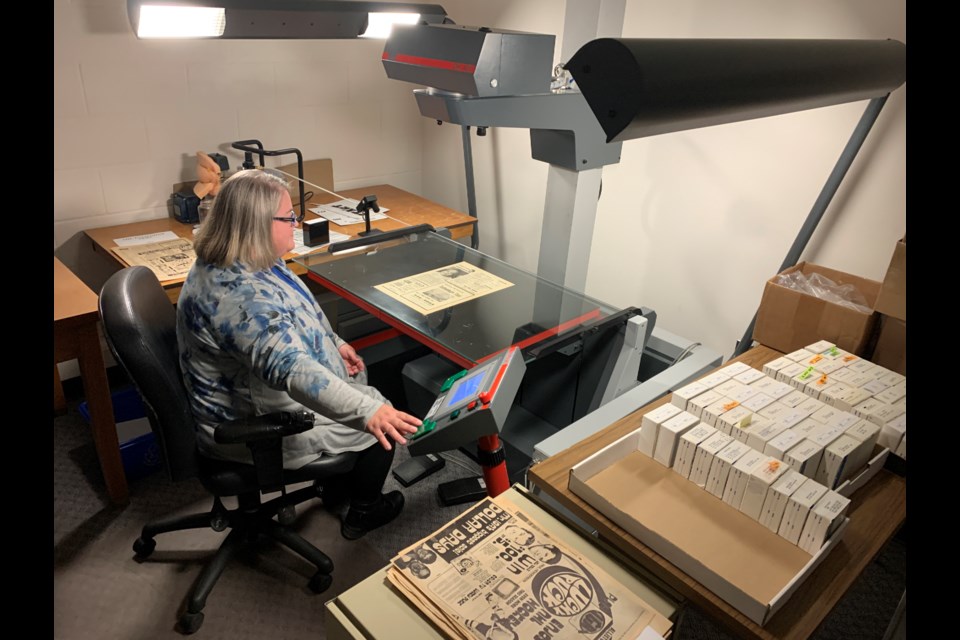Every day, in a small, nondescript room within the walls of the Simcoe County Archives, Jamie Levy is preserving local history.
The microfilm technician at the Midhurst-based archives is part of a rare breed of professionals, she admitted, noting there are only a few in-house microfilming programs in the country within government institutions — and she is proud to be part of one of them.
“It’s definitely a small niche. There are not many microfilmers around,” she said, adding the archives has created 2,276 microfilm negatives since 1984.
Levy spends her days photographing regional history — everything from newspapers to tax rolls — using a specialized camera that was purchased 10 years ago with the financial assistance of the Women’s Institute. The ‘new’ camera, she said, is much more technologically advanced, allowing her to adjust numerous settings on the screen, ranging from exposure and frame size to reduction. It also tracks how long her film is, and alerts her when she is getting to the end of her film roll.
Prior to the purchase of the camera in 2013, the archives was using a much smaller one that had been used since the early 1980s.
What this camera has brought to the table, added county archivist Matthew Fells, is a much larger area it can photograph. It also has a book cradle that allows for filming bound editions, and more precise exposure control. This results in a product that is cleaner and simply has better images.
“The three things we do here are we collect, we preserve and we make available … and (this camera) is a pillar of our preservation work. Our planning (is for) centuries because we have to keep these records for centuries, in many cases, by law and by historical interest. We have to plan much longer than changing file formats in the digital world. Five hundred years that doesn’t need any technological mediation to review is pretty much the best preservation we could have,” said Fells.
The camera uses 35-millimetre polyester film as opposed to cellulose film, which means it is significantly less likely the film will suffer from vinegar syndrome, where film becomes so acidic that it begins to break down and eat itself, Levy noted.
“Chances of that are very, very slim, but we do keep an eye on that. Every five years, we do an audit of our film using test strips to see what the acidity level is … but we haven’t had any issues,” she said.
Although Levy doesn’t consider her job to be “high profile,” what she does on a daily basis serves an integral role to the local archives, she said.
“Microfilm is a really good way of preserving records. Physical records can break down. Microfilm, if stored properly — and we have the proper storage capacity here — can last up to 500 years. With technology always changing, you can take a roll of microfilm, hold up to the light or over a light box and see what is on that roll of film,” she said, adding records are also digitized and those versions serve as accessible copies that can be used by researchers and the public. “Technology is constantly changing and we try to keep up with it, but microfilm will always hold up when stored properly, and it won’t change.”
The camera, she said, is easy to use — once one gets the hang of it. From day to day, Levy can be found filming anything from old Simcoe County newspapers dating as far back as the 1840s to county tax records, and everything in between.
“Basically, anything that is in physical danger of destruction, we will film it,” said Fells. “This information will outlast us, our kids and their kids. That is the goal.”



